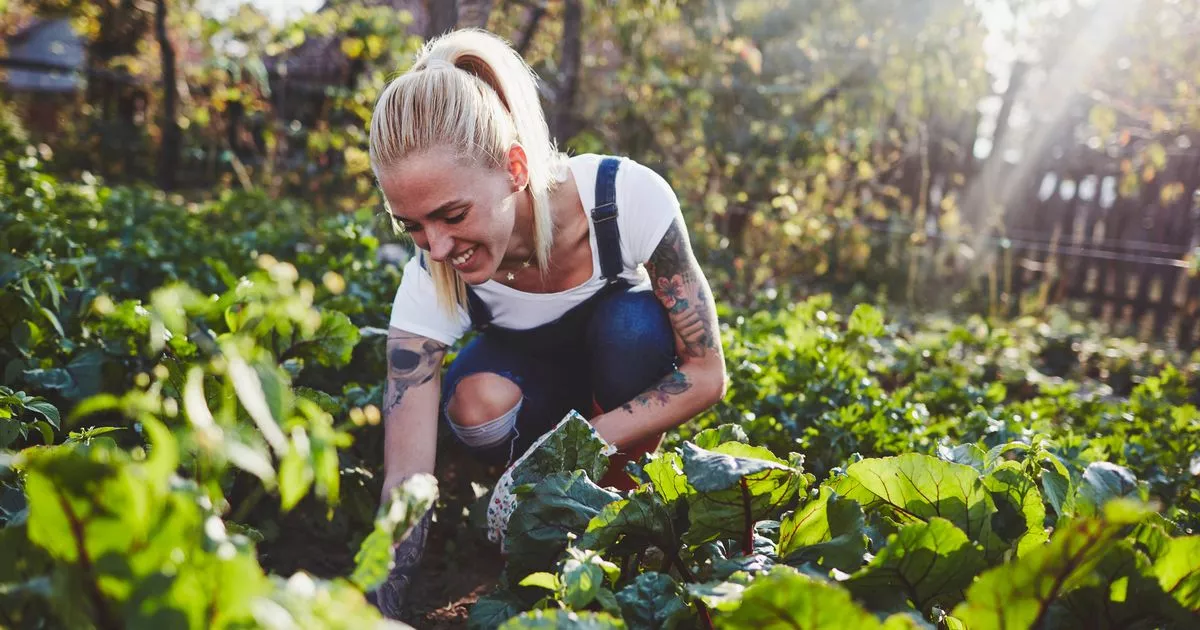A gardening expert said there’s one ‘big mistake’ people make when they start growing vegetables – and it could be stopping you from getting the most out of your crops
Your vegetables might just flourish more than ever with this simple gardening tip.
Spring is here – and those with a penchant for horticulture are venturing into their gardens to clear the remnants of winter and beautify their outdoor spaces in anticipation of summer enjoyment. For those planning to cultivate vegetables in their gardens this year, one gardening expert has shared a piece of advice that could significantly boost your harvest.
Jamie Walton, an expert in ecological horticulture and conservation, reflected on his early days of vegetable gardening when he committed a “big mistake” that he observed many novices making, potentially to the detriment of their vegetable plots. According to Jamie, the key isn’t just to plant vegetables and hope for the best; it’s crucial to grow flowers alongside them.
In a TikTok video, Jamie revealed how he initially “undervalued the importance of flowers” in his own vegetable garden. However, after integrating flowers into his planting scheme, he’s witnessed “so many benefits”. He advocates for “companion planting”, which involves growing various plants in proximity to each other, as a strategy to mitigate pest problems.
Certain flowers can attract beneficial predatory insects such as ladybirds, which help protect your vegetable crops from pests. Flowers can enhance pollination in your garden by attracting insects like bees and butterflies. Simply planting a few flowers with your vegetables can potentially lead to improved crop yields.
Here are some of the flowers Jamie recommends planting.
Nasturtiums
Also known as tropaeolum, nasturtium is a genus of around 80 species of flowering plants. According to Gardener’s World, they should be sown in April and planted in May, ready for them to flower throughout the summer months – meaning you still have plenty of time if you want to add them to your garden.
Jamie advises planting nasturtiums next to brassicas and beans. Cabbage white butterflies and their caterpillars feed on the leaves, so they won’t be drawn to any cabbage or lettuce you might be growing. Blackfly are also attracted to the leaves, which can save your beans from being attacked.
Marigolds
Jamie also recommends planting marigolds and sweet alyssum to help mask the smell of other plants and deter pests. Gardeners’ World states that marigolds are good companion plants for tomatoes and cucumbers as they can help keep whiteflies at bay, particularly in a greenhouse.
Marigolds should be planted in beds or pots once all risk of frost has passed. While you could plant them in March, it may be a good idea to wait until the end of the month or the beginning of April to be sure that all cold spells have passed.
Tansy
Incorporating tansy, or tanacetums, into your garden can also help your vegetables thrive by keeping the likes of ladybirds at bay, according to Jamie. In addition, dried tansy can be used indoors to repel flies and ants.
However, experts at Gardener’s World note that tansy should be handled with care. The plant is toxic if ingested in large quantities, and its leaves can cause skin irritation. Furthermore, it poses a danger to cat and dog owners as it is toxic to their pets, and those who share their homes with animals may want to choose a safer alternative.
Jamie shared: “A few of my favourites are nasturtiums, calendula, marigolds, borage and violas. And, of course, they also help lift your mood by adding so much beauty to any space!”


